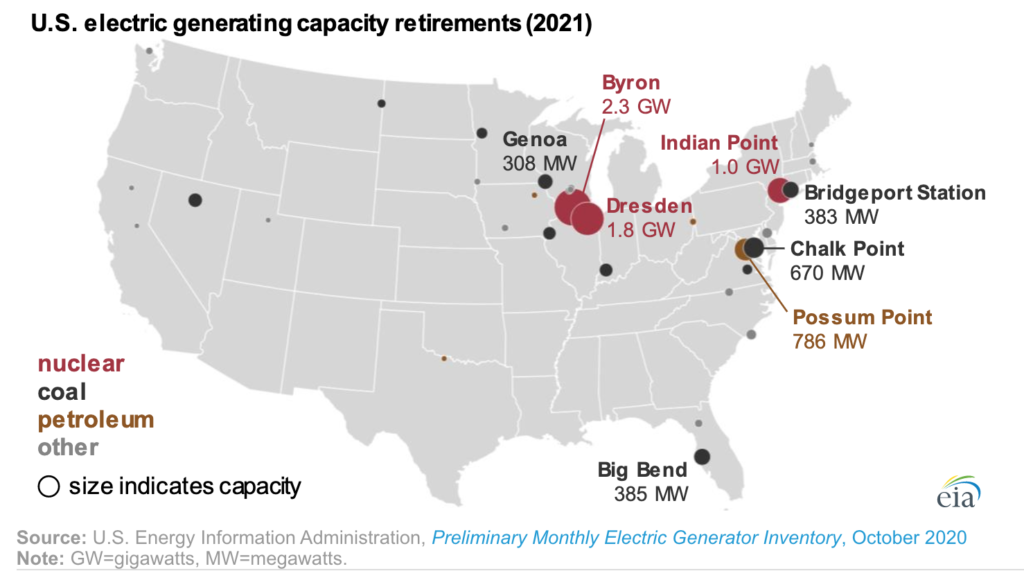In 2021, almost 9,1 gigawatts of U.S. electric generating capacity will retire, almost all of which will be nuclear and coal, according to the latest Inventory of Electric Generators by the Energy Information Administration (EIA).
Nearly 5,1 GW of nuclear capacity, which represents 56% of all the scheduled retirements of electric generating capacity for this year. It is also about 5% of all the nuclear power currently in operations in the U.S.
Most of this retiring capacity is due to the scheduled shut off of two plants from the Exelon Corporation, both of them in Illinois, in Dresden and Byron. Both of the plants have two reactors and the total combined capacity of them both is 4,1 GW.


The remaining 1 GW is attributable to the Unit 3 at the Indian Point nuclear plant in New York, which is scheduled to go out in April. According to EIA, if indeed all these plants shut down in 2021, as scheduled, it will be the highest record ever in annually nuclear retirements.
As the agency reports, factors for the nuclear retirement are the competitiveness of natural gas, and historically low prices, as well as the renewable energy push. Even if nuclear is not as pollutant as other sources, risks associated with it discourage its widespread use.
Recommended for you: Enphase Energy and Sunnova partner to deliver battery storage to American homes
Coal will retire 2,7 GW of capacity in 2021
Coal will be the second sector in which the most electric generating capacity shut offs concentrate. In fact, over the last five years, coal has had almost 48 GW off. This trend will slow down in 2021, according to EIA, but still, coal will put down 2,7 GW of generating capacity.
“These retirements will come primarily from older units—the capacity-weighted average age of retiring coal units is more than 51 years old,” the agency explains. Maryland, Florida, Connecticut, and Wisconsin will concentrate two-thirds of all the retirements.
The largest of which will be in Chalk Point, Maryland, where two coal units with almost 670 MW of capacity will be shut. Coal retirements, as we reported previously, are attributable to the renewable energy push and the ESG agenda; but also, to the competitiveness that natural gas has gained over the last five years.
In fact, according to EIA, during 2020’s first half, the electric sector used 30% less coal than the prior year’s same period. Toshiba, American Electric and Xcel Energy are just a few examples of companies that retired their coal-fired power plants in 2020,
Finally, nearly 800 MW of petroleum-fired electric capacity, and 253 MW of natural gas-fired units will cease to produce in 2021. “Almost all of the retiring petroleum capacity will be from the 786 MW unit at Possum Point in Virginia. The largest natural gas retirement will be McKee Run (103 MW) in Delaware. After operating for 34 years, a 143 MW biomass waste-to-energy plant in Southport, North Carolina, will retire in March,” the agency concludes.

